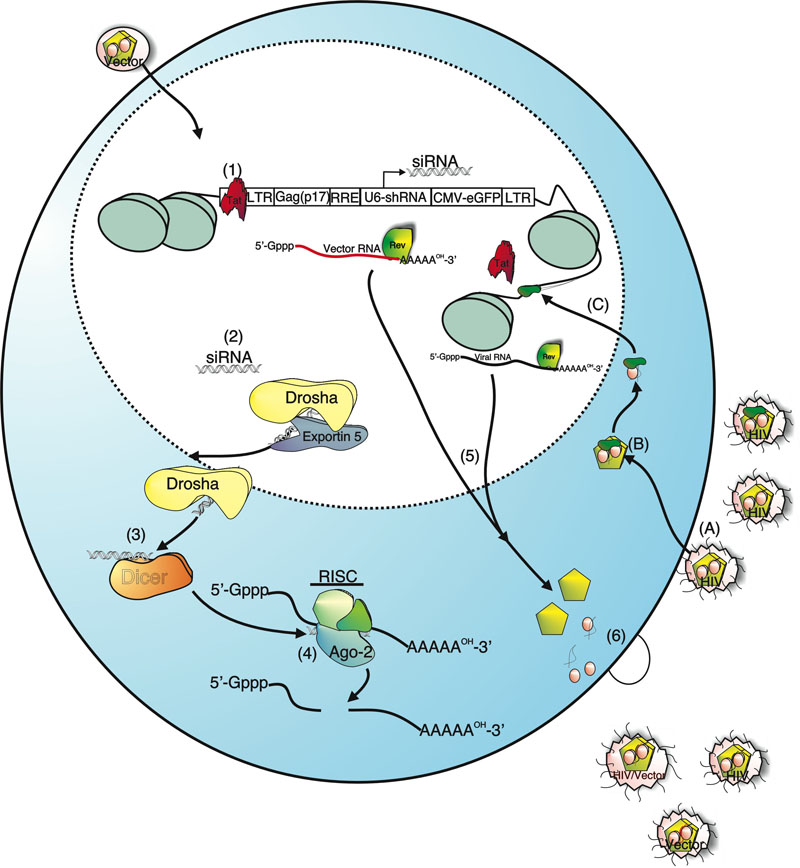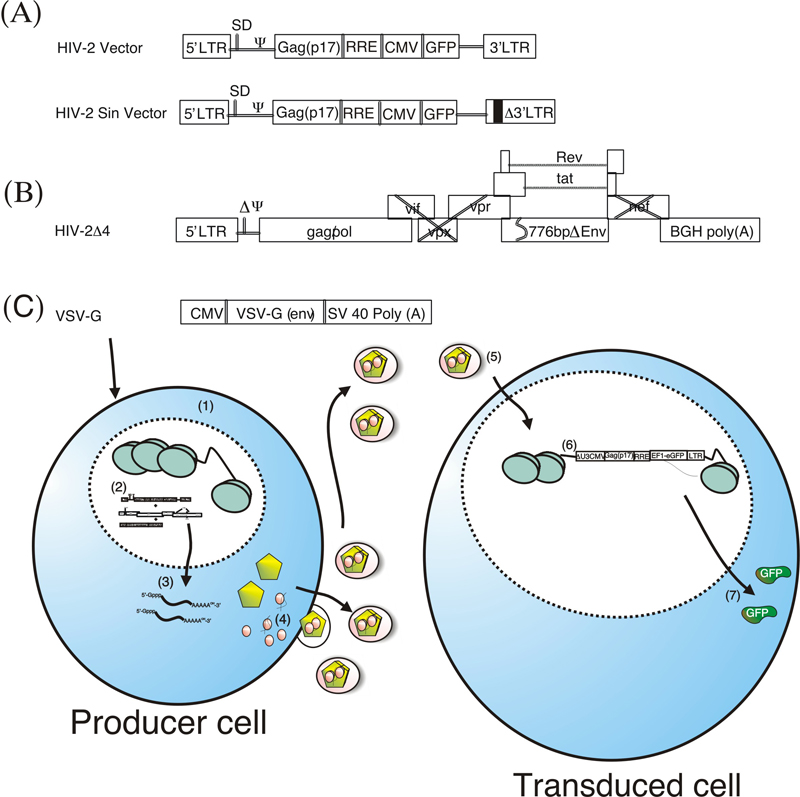
Vector mobilization in an HIV-1 infected cell. Initial stages of
HIV-1 infection involve an interaction of the virion with the target
cell CD4 and CCR5 co-receptor (A), followed by adsorption of the
virion, reverse transcription of the viral RNAs (B), pre-integration
complex and integration (C). The conditionally replicating vector
(crHIV vector) also undergoes similar cell surface binding, although
non-specifically with VSV-G pseudotyped envelope, reverse transcription
and integration (1). Once the virus and vector are integrated
transcription and export of viral/ vector RNA occurs and is facilitated
by HIV-1 Tat and Rev respectively (1). Both
full length viral and crHIV vector mRNAs are produced. Any anti-viral
moieties such as siRNAs would also be expressed at this stage (2). Next
vector and viral RNA are either translated or processed and packaged
(5) into the forming virion (6). Finally, three possible species of
virions would be expected to be produced from this vector and virus
containing cell; (a) either containing 2 viral copies (HIV), or (b) one
crHIV vector and one viral RNA (Vector/HIV), or (c) two crHIV vector
copies (Vector). These particles would then be expected to spread to
other target cells, i.e. containing CD4 and the respective HIV-1
co-receptors CCR5 or CXCR4.


